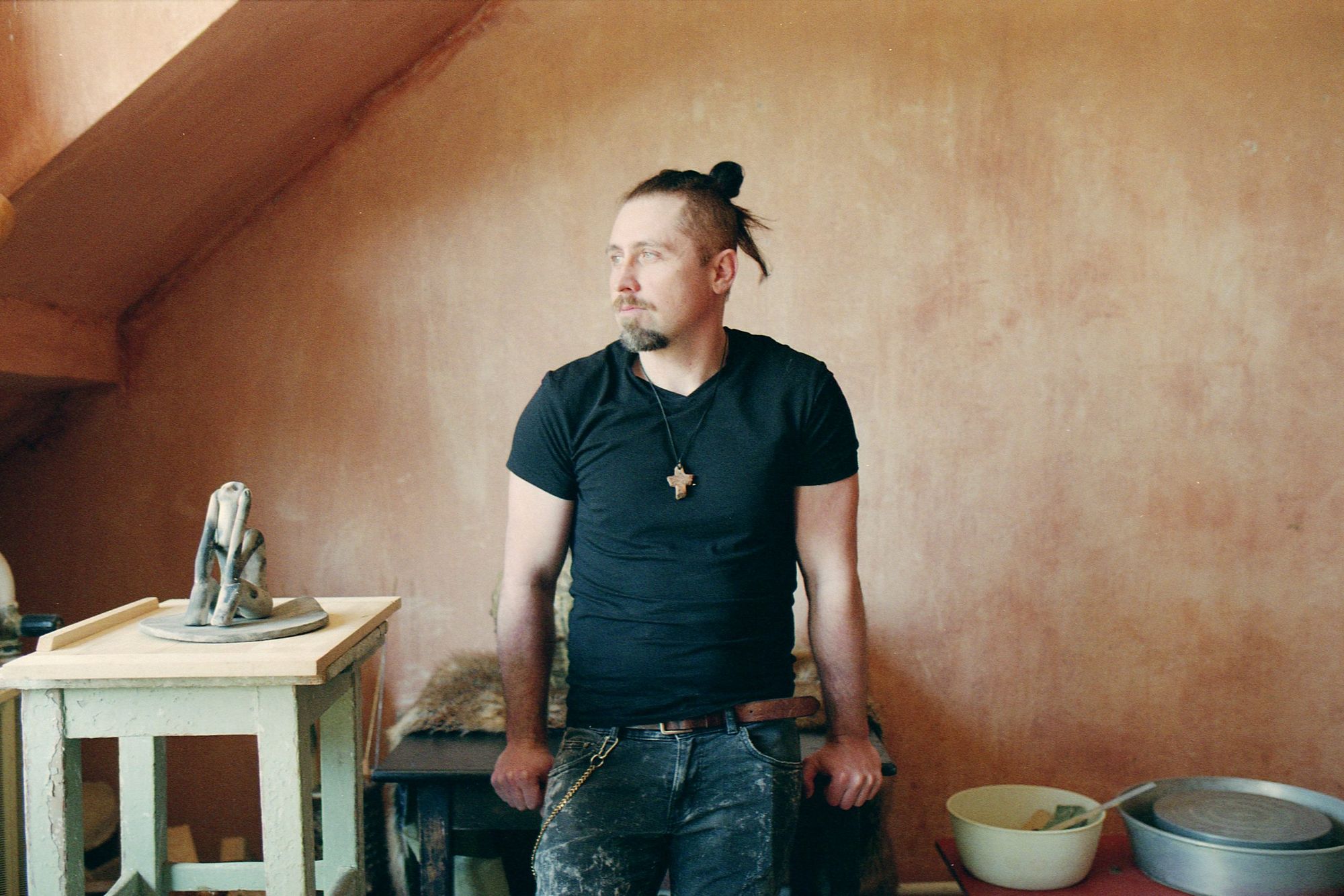At the end of March, at this year’s Maison&Objet design fair in Paris, rustic ornaments and modern reinterpretations of Neolithic forms emerged and lined up proudly in the Hungarian section. Behind the mystical ceramics and the Meander Ceramics Manufactory brand is Zsolt Imre Bárczi, one of the five Hungarian designers who had the chance to attend the event. We have now visited him and his workshop to tell the story of his unique ceramic figures. Interview!
We visited Imre at his home in Püspökladány, where Meander Ceramics are made. His workshop is on the first floor of his house, a small, apparently secret room, where his mystical figures and ornaments are kept. As we prepared for our visit, Imre mentioned that although he didn’t have on hand the ceramics exhibited in Paris, there were a few curiosities to see and touch.

Imre’s workshop was just like that, every shelf had something worth looking at, an object to start an exciting conversation. His ceramics are completely unique, he doesn’t strive for perfection in his process, he loves the unevenness, the imperfection that is so charming in old objects: the magic of broken edges, worn paint and amorphous, shabby figures. But his objects are born and come out of the workshop this way. As instinctively as the shapes evolve between his hands, so consciously does all his work build on the material heritage of the Neolithic period.
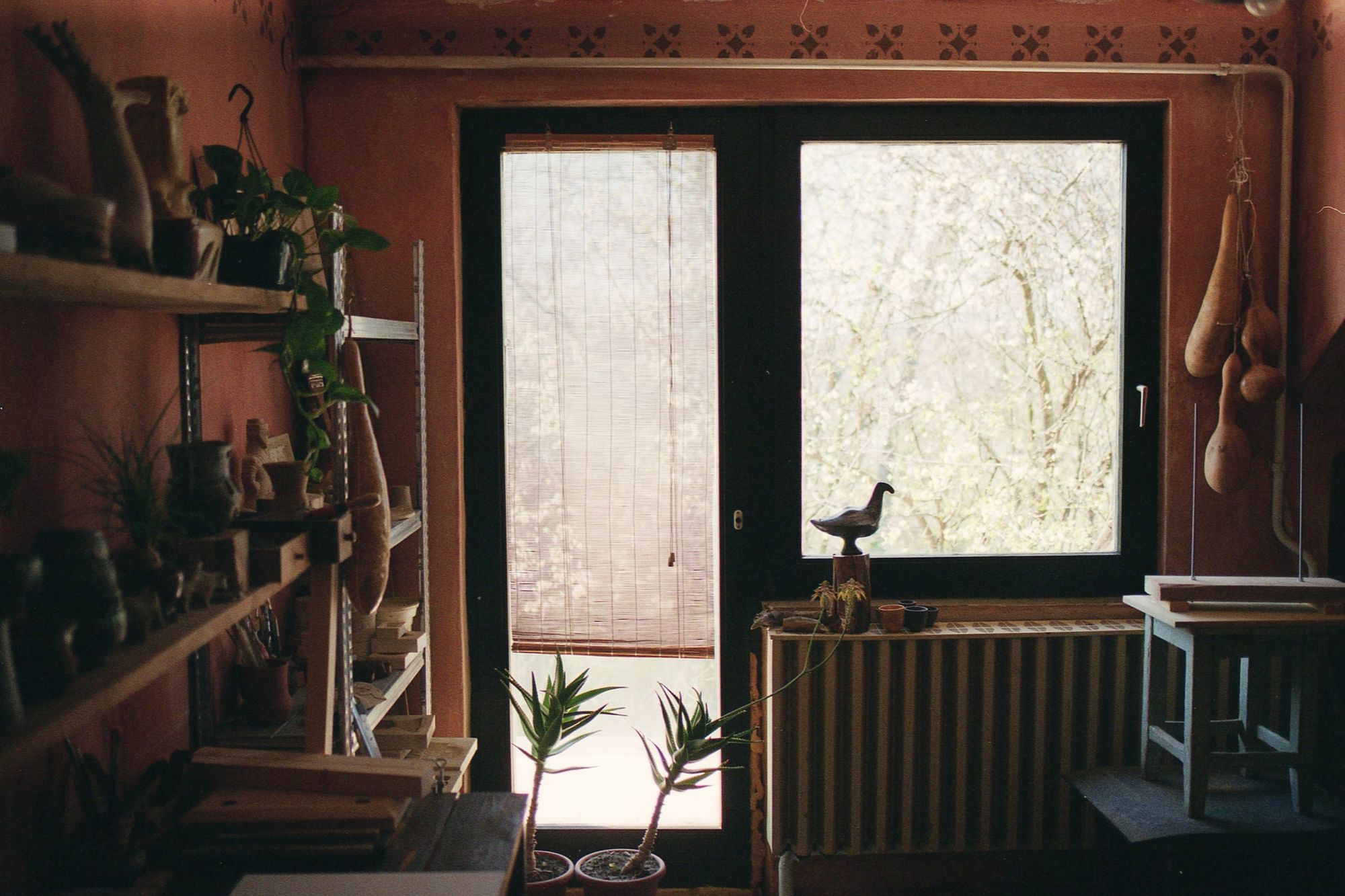
Can you tell us a bit about your educational background and about the time when you first got interested in ceramics?
If I remember correctly, I was 20 or 21 when I accidentally got into ceramics, and I’ve been caught up in it ever since. I came across a Neolithic figure that appealed to me. I got interested, not so much in the historical background at the time, but in the forms themselves. I went to the Medgyessy Ferenc Secondary School, Art College and Technical School in Debrecen, for a two-year OKJ course, and became a ceramist there, but after that, I didn’t continue to study the profession at the fine or applied arts college.
Your main and constant inspiration is this very specific period. When did you decide that you wanted to create in this style in the long term?
I’ve been interested in archaeology since I was a kid. I thought I was going to be an archaeologist when I was young, and though this desire somehow faded away, the world of prehistory and myths remained. Then, when I came across ceramics, I immersed myself in it. By the way, I’ve also worked in museums, on excavations and as a set painter in the theatre.
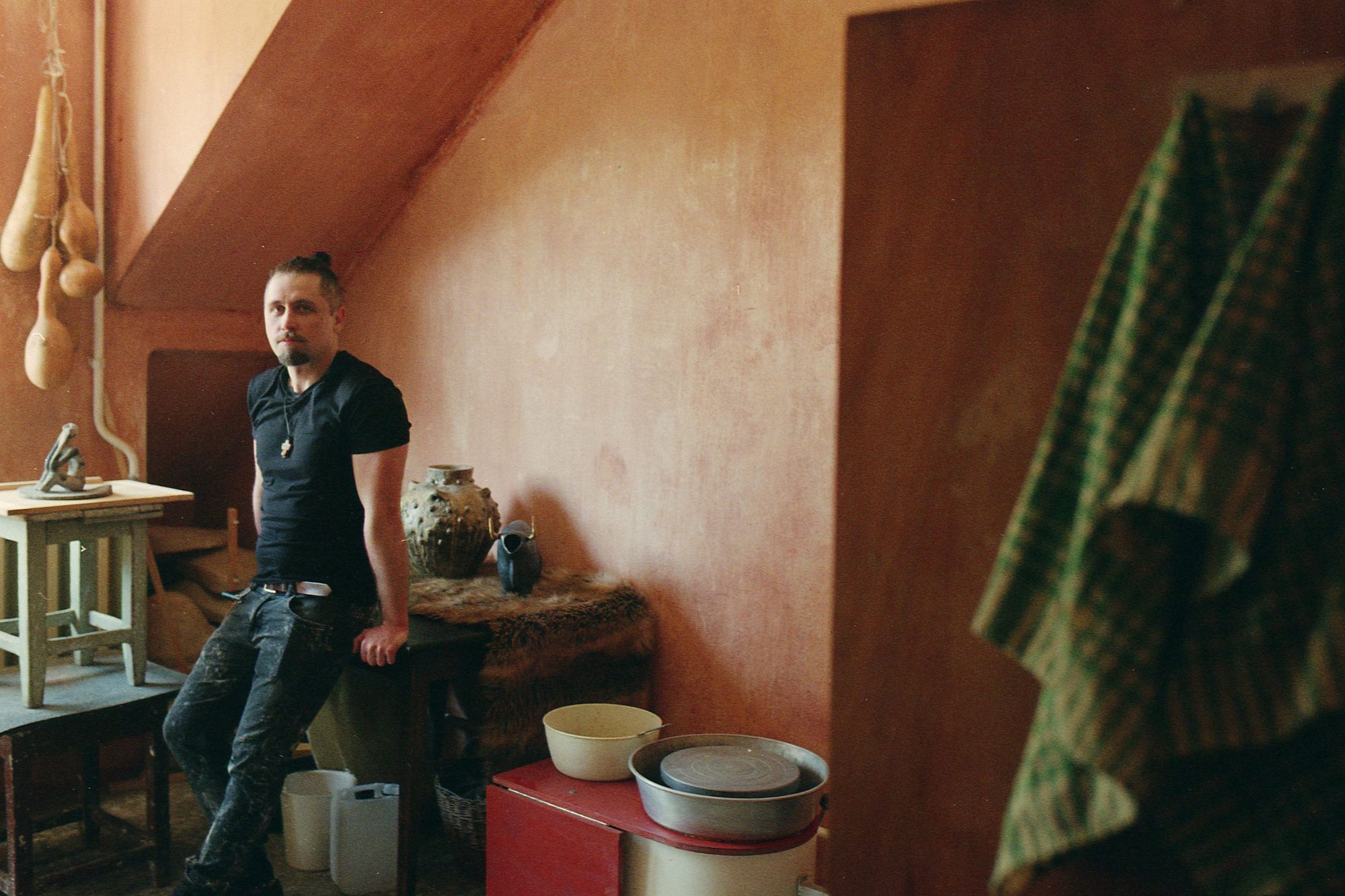
But besides all of this, have you been already making ceramics, as well?
Yes, although it wasn’t so focused at first, I was doing all kinds of things and experimenting with all sorts of things. I mean, many of my ceramics used to be cartoon-like, because I have a kind of fairy tale world in my head and I didn’t draw down these fairy tales, I just molded the characters. Thus, among my older ceramics, I have quite a lot of cartoonish figures. I try to keep the two separate because it’s very easy for the fairy tale figure and the prehistoric style to slip together. From these periods we have only speculations about the shapes, due to lack of data, but there are different theories about them.
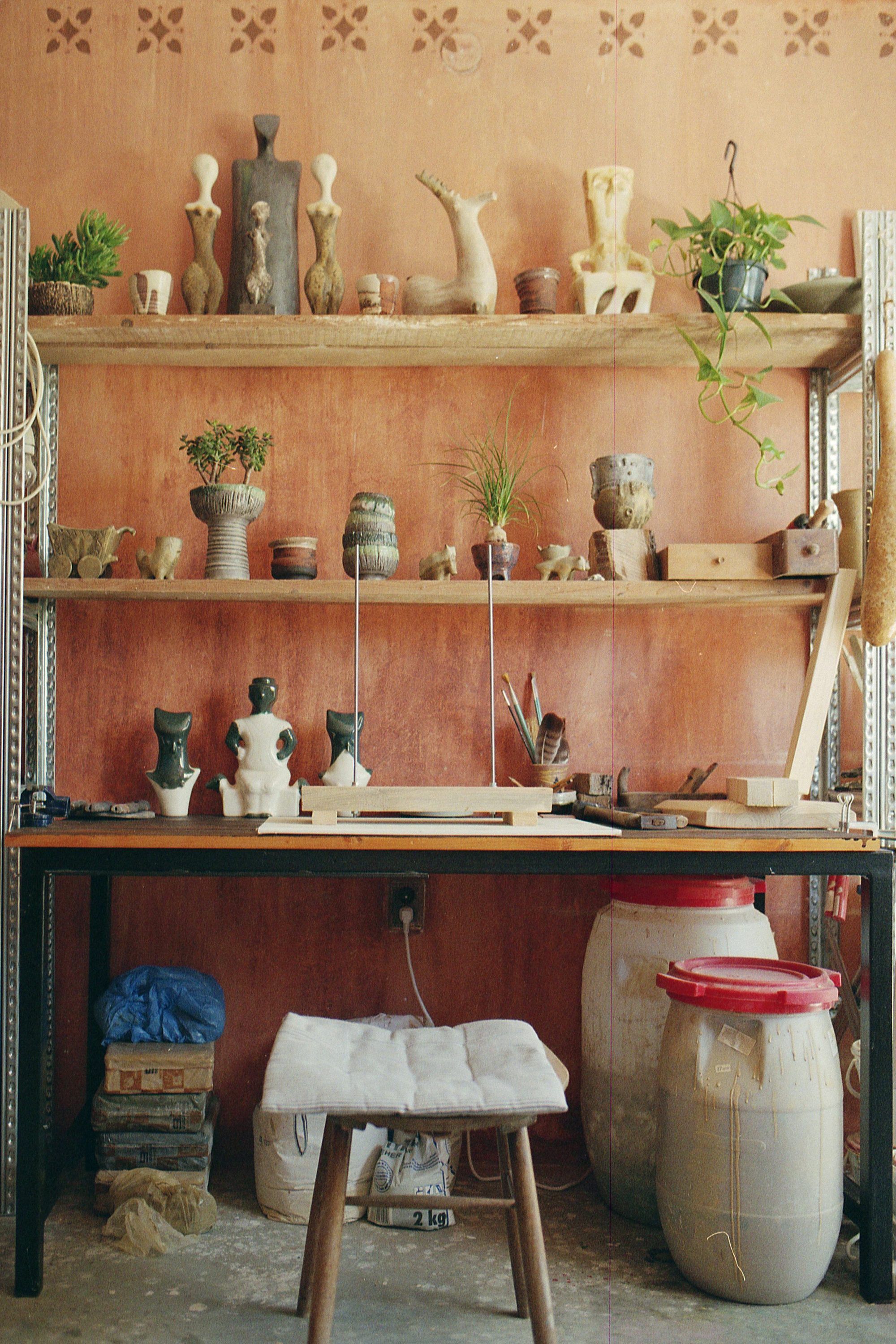
Do the newer and newer shapes emerge during the creative process, or do you consciously design them beforehand?
It evolves as I go along because when I create a shape and I’m halfway through I realize what I can do with it, and if it’s the experimental phase I experiment, but if something has to be done then of course it has to be done according to the plan. In fact, I have so many plans, I think it will take me almost the rest of my life to implement them.
So if you let your imagination run wild, can you step out of this world?
Yes, I can, but the style is still there. One of my aims would be that, because these forms are so unknown, I want to work on them without abandoning the formal world of this period. If these forms become more familiar, then maybe we can start to move in an experimental direction, but for the time being these forms are not yet so familiar. I draw a lot from archaeological ceramics, which I do consciously because sometimes I have to hold myself back from getting too far away from the classical trends.

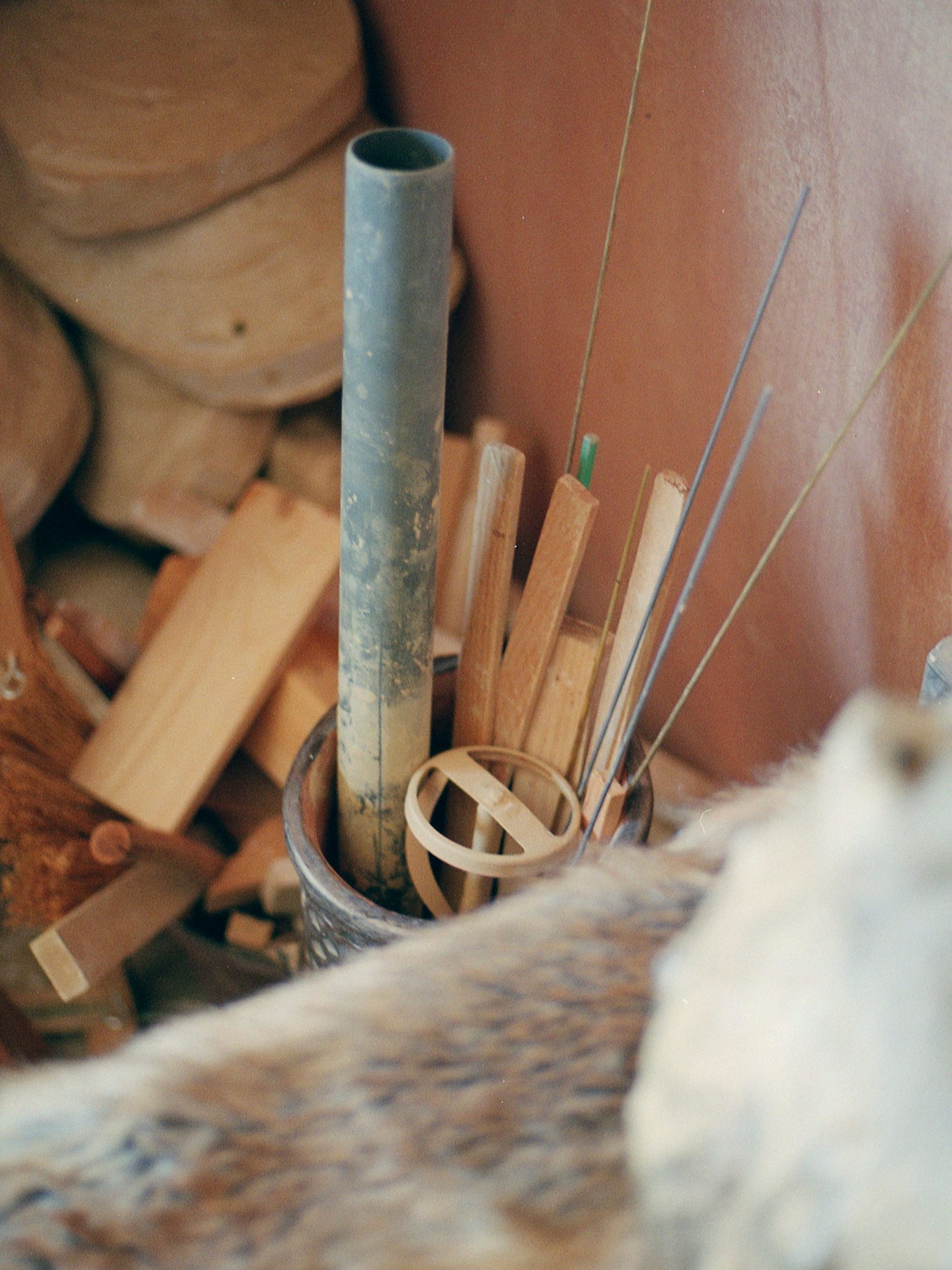
To what extent are your ceramics utilitarian and decorative?
Both, but I do them mainly as decorative objects. A few decorative objects can be said to be mugs or plates, but for utilitarian objects, I tend to go in the direction of plants, for example, to make flower holders and planters.
How much do you follow current trends? We can take the current event in Paris as an example.
In Paris, they had a small slice of home decor, but I noticed that my ceramics were not like other works, I think they really stood out among all the utilitarian objects. That’s both a good thing and a bad thing. However old these forms are, they now feel new and different next to, say, a trendy form. Some people really like them and are interested!
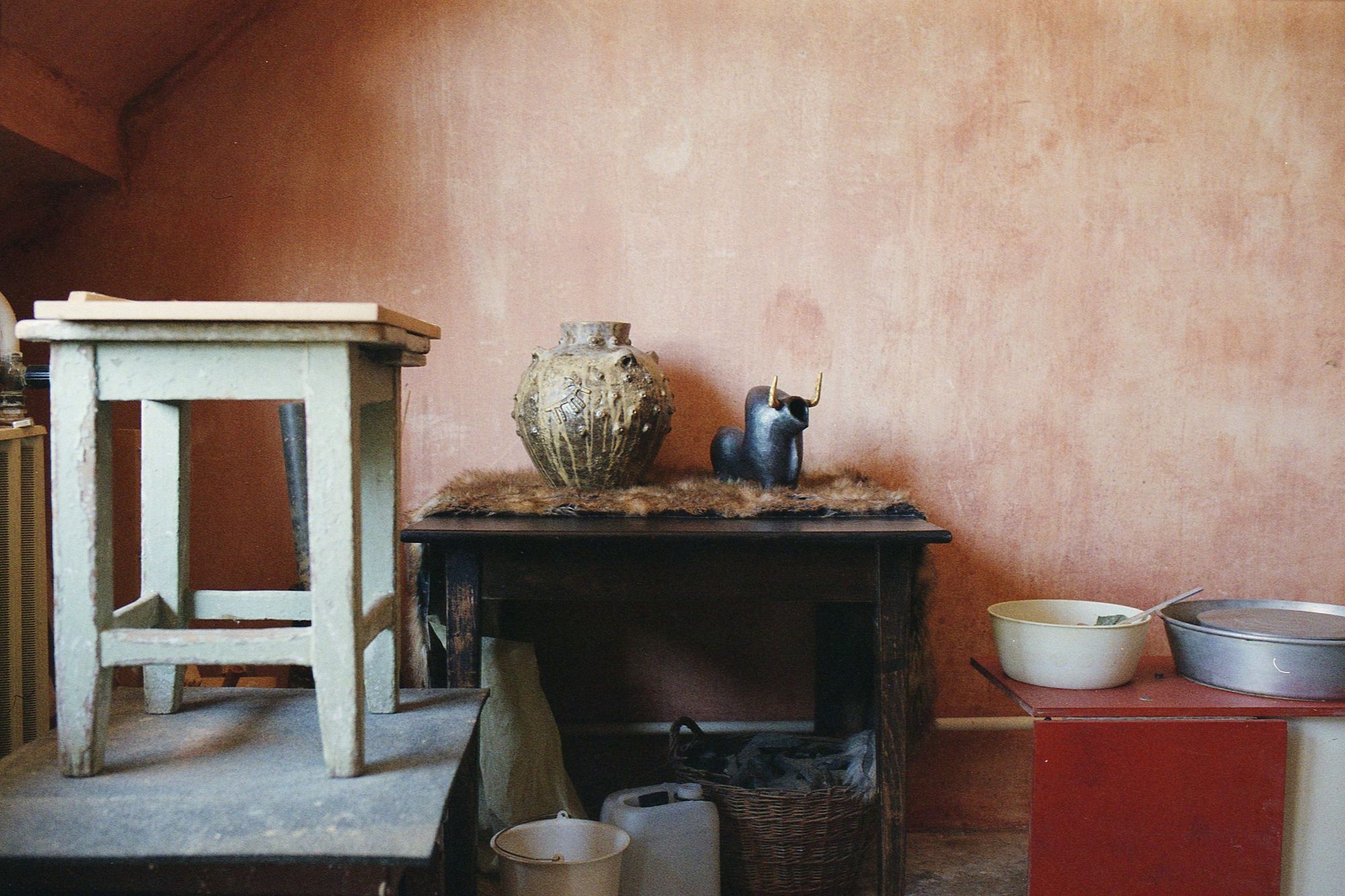
Some of my shapes are so old that they feel modern, almost abstract. Archaeological artifacts are my main inspiration, but at the moment, for example, Viking films, series and games as well are very much in vogue, and that’s also feedback because I see that there is still a demand for this period.
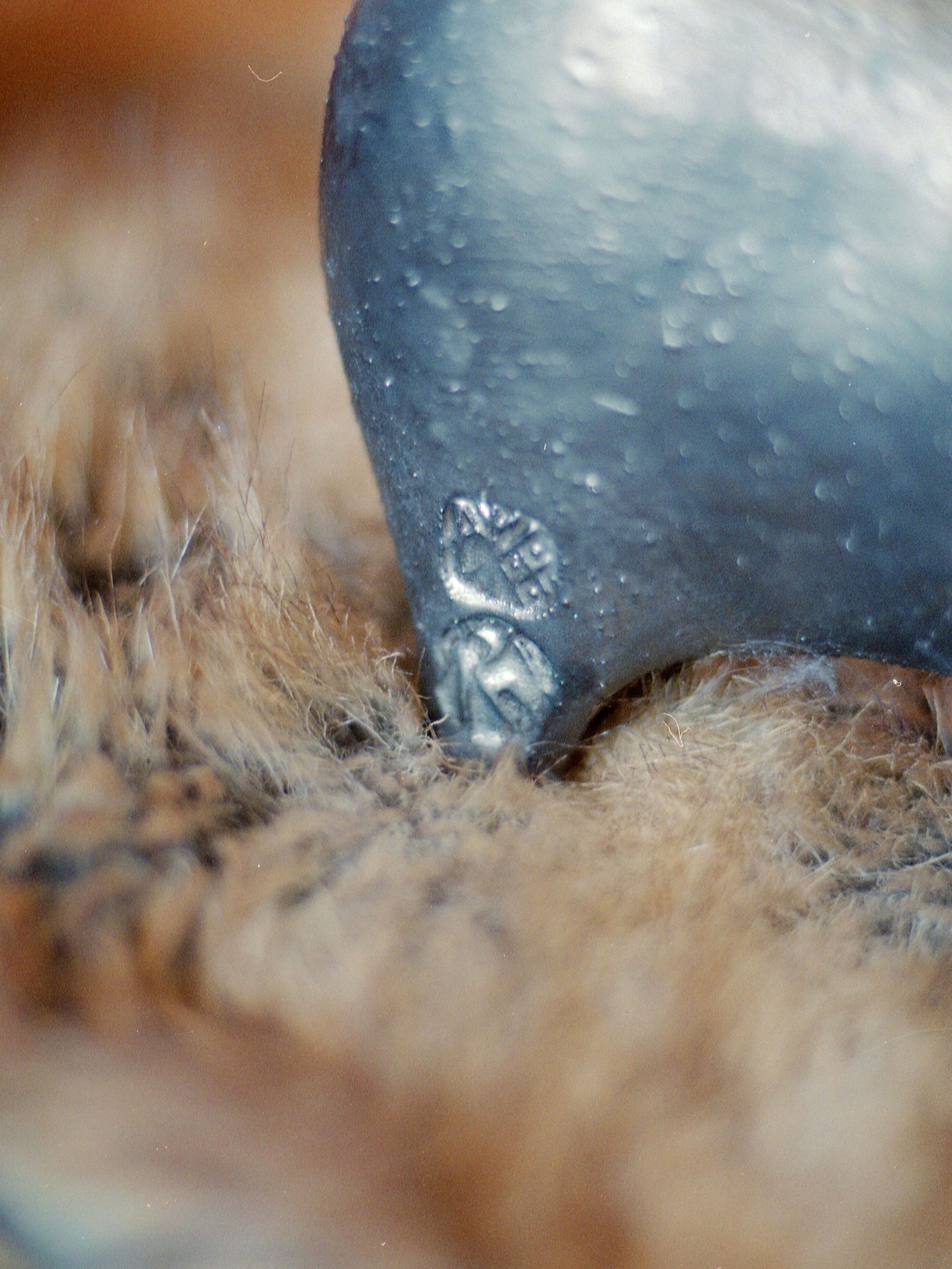
The name Meander was also a conscious choice, because this river pattern was typical of certain periods of the Neolithic, with meanders turning at certain times and then returning to a previous stage. I interpret this as a stream of time and feel that in my work I am bringing back these forms from another time. And this is refreshing.
Can you tell us a bit about the technical background of ceramics?
I make them all by hand, in the simplest way. Sometimes I cast parts for them in copper, try to coat the wood, the metals. I like to, and I want to play around with the proportions so that I’ll have something with a little ceramic but a lot of copper. And if I want to make something in more efficient mass production, I cast it.


Do you have current or future project plans?
I always have quite a lot, but I have to pick the ones I think are the most important. Light is the other direction I’m interested in at the moment, more specifically the fusion of light with ceramics. I’ve been planning to work with light for a long time, and now I have an idea to incorporate wickerwork with ceramics and make lamps. The possibilities are endless, it’s impossible to accomplish everything in a lifetime.
Photos: Dániel Gaál
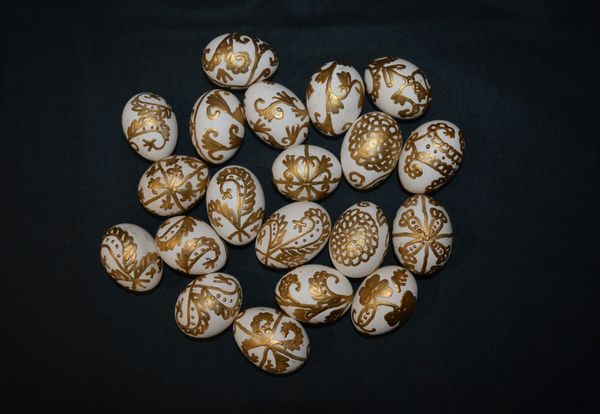
Digitalization for a village in Transcarpathia | Unbreakable Traditions
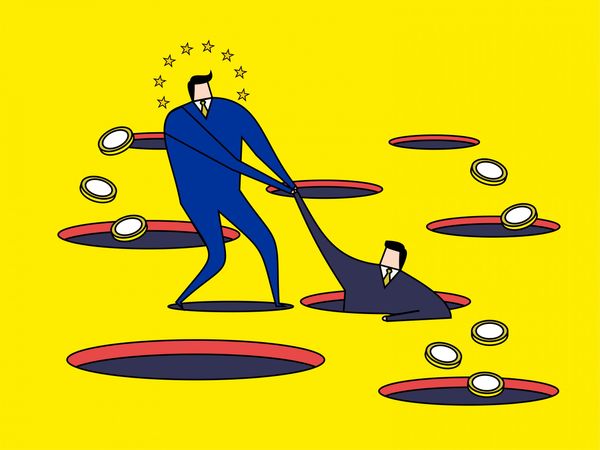
How regulation of tech giants would help SMEs










